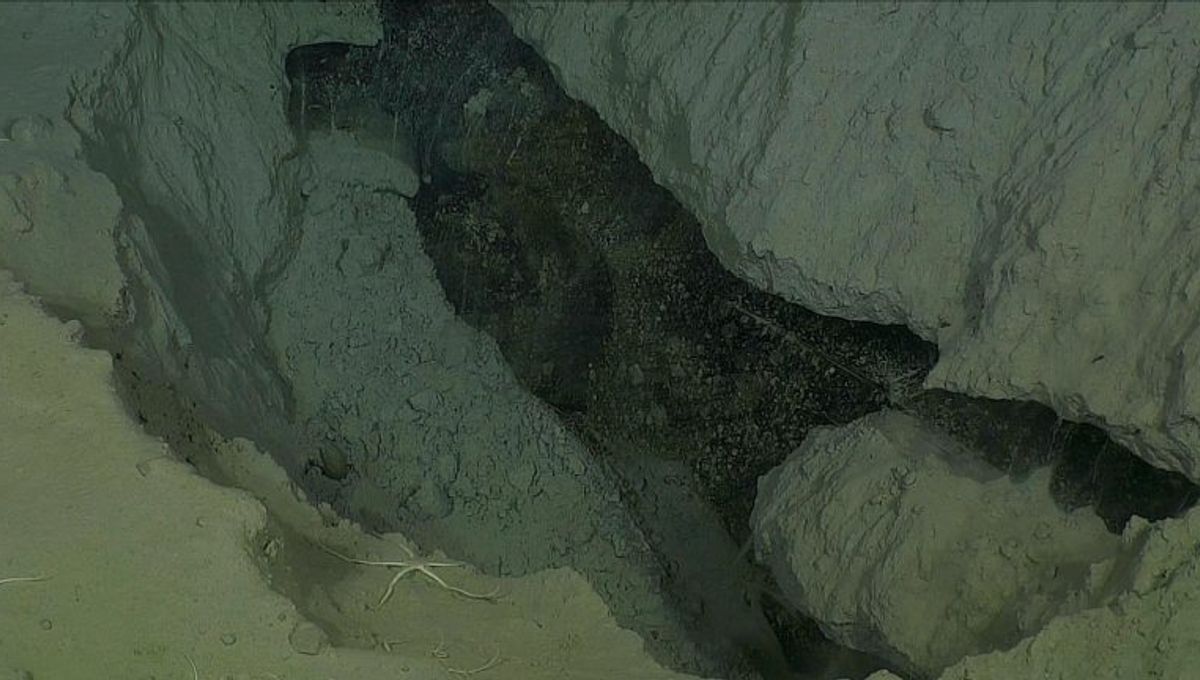
Deep in the Arctic Ocean, a portion of seafloor covered in craters larger than football fields is challenging assumptions about the workings of the icy waters of the planet’s far north.
In the Canadian Beaufort Sea, scientists have previously discovered the presence of gaping craters on the seabed that are covered in mounds of ice and sediment. Between 2010 and 2022, a total of 65 newly formed craters were indentified, the largest of which was the size of a city block with six-story buildings.
It was assumed that the permafrost arrived here towards the end of the last Ice Age around 11,000 years ago, when sea levels rose and covered the ancient permafrost on the Arctic shelf. However, new research suggests the story isn’t so simple.
In a new expedition, researchers used underwater robots to collect samples from the ice formations inside recently formed large seafloor craters. Isotopic analysis of the ice revealed that it was formed under present-day conditions, not in the distant past when different climatic conditions were at play.
The ice is produced when deeper layers of ancient submarine permafrost are melted, creating brackish groundwater that rises before sinking again, refreezing on its journey back to the seafloor. It’s then held in a frozen state at an ambient temperature of -1.4°C (29.5°F) until the process starts again.
In other words, the ice is the product of a constant melting and refreezing cycle.
“Our work shows that permafrost ice is both actively forming and decomposing near the seafloor over widespread areas, creating a dynamic underwater landscape with massive sinkholes and large mounds of ice covered in sediment,” Charlie Paull, lead study author and a geologist at Monterey Bay Aquarium Research Institute (MBARI), said in a statement.
“These findings upend our assumptions about underwater permafrost. We previously believed all underwater permafrost was leftover from the last ice age, but we’ve learned that submarine permafrost ice is also actively forming and decomposing on the modern seafloor.”
The research suggests that permafrost may exist under more of the Arctic shelf than previously expected, since the new near-seafloor ice is picked up by conventional methods.
More crucially, the findings suggest the depths of the Arctic Ocean are an ever-changing world, not a static environment that has stayed unaltered for millennia. As such, the researchers on the project believe this insight should make us reevaluate the way in which humans interact with the Arctic in the future.
“These dramatic and ongoing seafloor changes have huge implications for policymakers who are making decisions about underwater infrastructure in the Arctic,” added Paull.
The new study was published in the Journal of Geophysical Research: Earth Surface.
Source Link: Strange Ice On Arctic Seafloor Shows It's A Surprisingly Dynamic World Down There